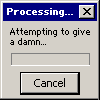
In the field of firearm design a manufacturer will often create a weapon capitalize on an already existing or perceived market. Sometimes a designer will become aware of a need for a particular weapon and will the develop or sell the concept to an existing manufacturer, or the design may be the result of specific government program in which certain features, numbers produced, and price are determined. It is very rare for a weapon to developed and marketed by the people actually using it in the field. The High Standard Model 10 is one of those cases.
Back in 1957 recently retired Sergeant Alfred H. Crouch of the Santa Monica Police Department began developing what he believed did not existing at that time. A shotgun designed specifically to suit the needs of Law Enforcement Officer. Yes, manufacturers did build shotguns for the law enforcement but in almost every case these were, and still are, just sporting models that have received the addition of some modest features that make them more desirable for police use. While powerful and useful tools they still are rather large weapons that can be difficult to handle in close confines and usually require both hands to use. Sure there are folding stock and pistol grip only designs made that great reduce the overall length, but these require a second hand to unfold their stocks or have no shoulder stock at all and are strictly short range weapons. What Sergeant Crouch wanted was a shotgun that could be carried and used with one hand free just like a standard police revolver.
Since he wanted to be a weapon that could be operated with just one hand he went with a semi auto design. He inquired with his fellow police officers and got an enthusiastic response for his idea. Unfortunately all the major firearm manufacturers were indifferent to his design at that time. Undaunted with the rejections from the companies and positive that he and his fellow officers had the right idea he decided to build it himself.
After examining the then current models on the market Al Crouch decided on the High Standard Flite King. He selected specifically because would permit him to incorporate the rotating yoke stock that was an important feature of his design.
Development was at first very slow but with financial assistance from some of his fellow officers and the support of several Police Chiefs in the area, Al Crouch continued his crusade to build the ultimate police shotgun. Finally around 1964 his design came to the attention of Ed Lomax and Bill Donovan at High Standard. Both realized that Al's design would give High Standard a product unique in the law enforcement market, and finally the arrangements were made to produce what would be called the High Standard Model 10 in 1967.
Because of the mission requirements Sergeant Crouch's shotgun is a bullpup in design. This gives it the ability to carried slung vertically on ones side. To bring into action one only needs to grasp the pistol grip and swing it up to ones shoulder. It can be fired with either one or both hands; although for long range accuracy a two hand rifle style stance is best. Due to short overall length the weapon could be concealed under a trench coat like a whipit-style shotgun but allowed immediate long range use rifled slugs well beyond the range of similar length sawed-off/ whipit guns. The only drawback is that was it was not a light weapon, around nine pounds loaded, and due to its bullpup design and location of the ejection port it can only be effectively used on the right side of the body.
One feature of the Model 10 that was truly ahead of its time was the inclusion of an integral flashlight. In the Model 10A in built into the stock assembly; with Model 10B it was redesigned to be a detachable unit. Due to the nature of heavy-duty police flashlights of the 1960's this made for a hefty piece of equipment on the shotgun. One has to wonder what it would be like today with the much smaller LED tactical lights on the market?
With so many great features one might wonder why didn't the Model 10 just take over the tactical shotgun market in the US for Police and civilian use? well there are several reasons.
One of greatest handicaps High Standard had in selling the Model 10 was Sergeant Crouch's insistence that the weapon be sold to only members of Law Enforcement. He feared that the features that made his weapon such a powerful tool to police officers would be used against them by the very criminals they had to face. One can argue the merits, flaws or logic of this stand, but this sales requirement kept the Model 10 out of the larger civilian market where Remington, Winchester, Mossberg, Savage, and Ithaca were allowed claim dominance.
Another reason for the Model 10's slow acceptance was that for 1967 it looked like some crazy futuristic raygun! Firearm owners can be a rather conservative group, and this thing sure didn't look like any shotgun they had seen! In fact with the addition of some Picatinny rails and modern dot sight the Model 10 would not look like a 40 year old design at all today!
Finally for some ergonomics of the Model 10 are less than ideal for some. I have not had a chance to fire a Model 10 but I have had a chance to shoulder a Model 10B. Quick from low ready to shoulder drills. Due to the width of the adapted shotgun action it is almost impossible for me to use the sights on the weapon. Without contorting my head around I cannot see through the rear sight! Now know people who have no problem with this so maybe I just have a fat head! Also with the ejection port located on the right side it makes left hand firing from the shoulder impossible without the risk of injury.
Back in 1957 recently retired Sergeant Alfred H. Crouch of the Santa Monica Police Department began developing what he believed did not existing at that time. A shotgun designed specifically to suit the needs of Law Enforcement Officer. Yes, manufacturers did build shotguns for the law enforcement but in almost every case these were, and still are, just sporting models that have received the addition of some modest features that make them more desirable for police use. While powerful and useful tools they still are rather large weapons that can be difficult to handle in close confines and usually require both hands to use. Sure there are folding stock and pistol grip only designs made that great reduce the overall length, but these require a second hand to unfold their stocks or have no shoulder stock at all and are strictly short range weapons. What Sergeant Crouch wanted was a shotgun that could be carried and used with one hand free just like a standard police revolver.
Since he wanted to be a weapon that could be operated with just one hand he went with a semi auto design. He inquired with his fellow police officers and got an enthusiastic response for his idea. Unfortunately all the major firearm manufacturers were indifferent to his design at that time. Undaunted with the rejections from the companies and positive that he and his fellow officers had the right idea he decided to build it himself.
After examining the then current models on the market Al Crouch decided on the High Standard Flite King. He selected specifically because would permit him to incorporate the rotating yoke stock that was an important feature of his design.
Development was at first very slow but with financial assistance from some of his fellow officers and the support of several Police Chiefs in the area, Al Crouch continued his crusade to build the ultimate police shotgun. Finally around 1964 his design came to the attention of Ed Lomax and Bill Donovan at High Standard. Both realized that Al's design would give High Standard a product unique in the law enforcement market, and finally the arrangements were made to produce what would be called the High Standard Model 10 in 1967.
Because of the mission requirements Sergeant Crouch's shotgun is a bullpup in design. This gives it the ability to carried slung vertically on ones side. To bring into action one only needs to grasp the pistol grip and swing it up to ones shoulder. It can be fired with either one or both hands; although for long range accuracy a two hand rifle style stance is best. Due to short overall length the weapon could be concealed under a trench coat like a whipit-style shotgun but allowed immediate long range use rifled slugs well beyond the range of similar length sawed-off/ whipit guns. The only drawback is that was it was not a light weapon, around nine pounds loaded, and due to its bullpup design and location of the ejection port it can only be effectively used on the right side of the body.
One feature of the Model 10 that was truly ahead of its time was the inclusion of an integral flashlight. In the Model 10A in built into the stock assembly; with Model 10B it was redesigned to be a detachable unit. Due to the nature of heavy-duty police flashlights of the 1960's this made for a hefty piece of equipment on the shotgun. One has to wonder what it would be like today with the much smaller LED tactical lights on the market?
With so many great features one might wonder why didn't the Model 10 just take over the tactical shotgun market in the US for Police and civilian use? well there are several reasons.
One of greatest handicaps High Standard had in selling the Model 10 was Sergeant Crouch's insistence that the weapon be sold to only members of Law Enforcement. He feared that the features that made his weapon such a powerful tool to police officers would be used against them by the very criminals they had to face. One can argue the merits, flaws or logic of this stand, but this sales requirement kept the Model 10 out of the larger civilian market where Remington, Winchester, Mossberg, Savage, and Ithaca were allowed claim dominance.
Another reason for the Model 10's slow acceptance was that for 1967 it looked like some crazy futuristic raygun! Firearm owners can be a rather conservative group, and this thing sure didn't look like any shotgun they had seen! In fact with the addition of some Picatinny rails and modern dot sight the Model 10 would not look like a 40 year old design at all today!
Finally for some ergonomics of the Model 10 are less than ideal for some. I have not had a chance to fire a Model 10 but I have had a chance to shoulder a Model 10B. Quick from low ready to shoulder drills. Due to the width of the adapted shotgun action it is almost impossible for me to use the sights on the weapon. Without contorting my head around I cannot see through the rear sight! Now know people who have no problem with this so maybe I just have a fat head! Also with the ejection port located on the right side it makes left hand firing from the shoulder impossible without the risk of injury.
Category All / All
Species Unspecified / Any
Size 1081 x 852px
File Size 121.4 kB
I had one of 10B's for awhile, glad to see someone recognize them as they are a strange earmark in combat shotguns. They feel awful at the shoulder XD
If you ever need any reference pictures Id be more then happy to help out, I have quite a large collection but I work with thousands of firearms at work. I really enjoy your art, fantastic stuff.
If you ever need any reference pictures Id be more then happy to help out, I have quite a large collection but I work with thousands of firearms at work. I really enjoy your art, fantastic stuff.
Apparently one of the few gripes I've heard about this design is that it likes full power magnum loads for reliable feeding. Most non-lethal loads used lower pressure rounds. I don't know it this is a quirk that could be easily fixed or not. A variable gas system might help.
*saved for reference* (Wants to include a shotgun in a future chapter.)
Have you considered depicting a Girandoni Air Rifle? Or a more updated version of something else air-powered? (Even more interesting is the WWII air rifle made by a partisan bicycle maker in occupied Austria. Near the bottom of the page here, if the link works.)
Have you considered depicting a Girandoni Air Rifle? Or a more updated version of something else air-powered? (Even more interesting is the WWII air rifle made by a partisan bicycle maker in occupied Austria. Near the bottom of the page here, if the link works.)
Nope this is the real McCoy! Only a few thousand were made so it is not as common as the Mossberg 500 or Remington 870. Here is link to a site with an article on the Model 10 http://world.guns.ru/shotgun/sh26-e.htm . The only thing I find odd is that Max H. Popenker the author of that site says that Alfred Crouch based his initial design around the Remington 11-48 instead of the High Standard Flite-King like Thomas F. Swearengen claims in his book "The World's Fighting Shotguns"? One way or another the shotgun is real not fictional.
A rather learned gun enthusiast of my acquaintance and I had a discussion about this very weapon not too long ago and he said back in the 70's he had one and although a very well thought out design, the "raygun" problem was a very real one. He had to pull it on a gentleman of the dark persuasion who was attempting to steal his car. The man did not recognize it as a real gun and attempted to attack him. He had to fire his weapon just to prove it was a real gun before he gained the proper respect it deserved. After that he sold it because it turned a situation from a simple stop and desist to a shots fired situation for no good reason. I had been interested in this very design for home defense which prompted the discussion in the first place. He said it was a really bad idea for two reasons, one the 'raygun" problem and the other, more serious problem. This gun is design to kill people and even if used to defend yourself in a home invasion, you could face a liberal, anti-gun prosecutor who may decide you were waiting for a chance to cold bloodedly kill someone. They don't even have to win to ruin you, just the charges and suspicion plus legal fees will do the job nicely.
Instead, he said get a nice sporting shotgun. A fine English sporting piece with all the engraving and tweedy refinements for home defense. If you do have to use it, it was simply a hunting firearm that happened to be handy and it is a shame such a fine piece had to be sullied in such a way...
Instead, he said get a nice sporting shotgun. A fine English sporting piece with all the engraving and tweedy refinements for home defense. If you do have to use it, it was simply a hunting firearm that happened to be handy and it is a shame such a fine piece had to be sullied in such a way...
It has a tubular magazine that is located below the barrel. I originally came with a 4 shot tube magazine but later extensions were offered that took the capacity up to 7 shots. Shells were loaded from the bottom of the receiver just like a normal shotgun magazine. Important thing to remember. While this has one of the most radical appearance in designs for a shotgun the basic action is still derived from a standard Flite-King shotgun that were used every autumn to hunt pheasant, ducks and quail across the wetlands and farmlands of America.

 FA+
FA+























Comments